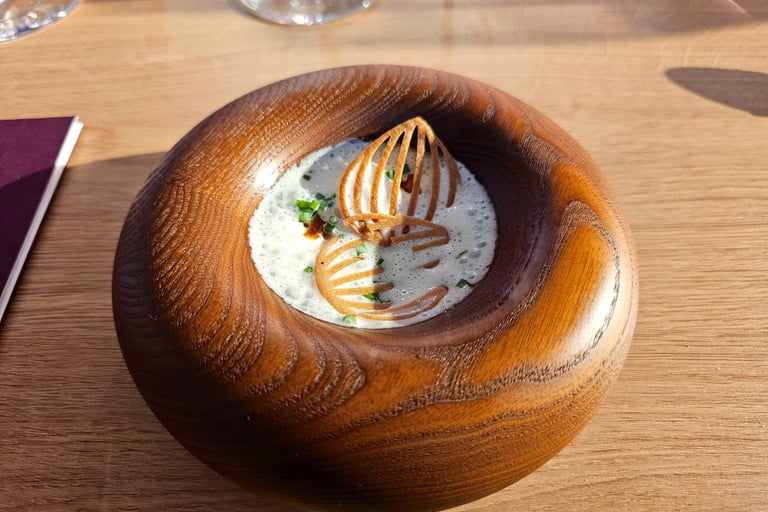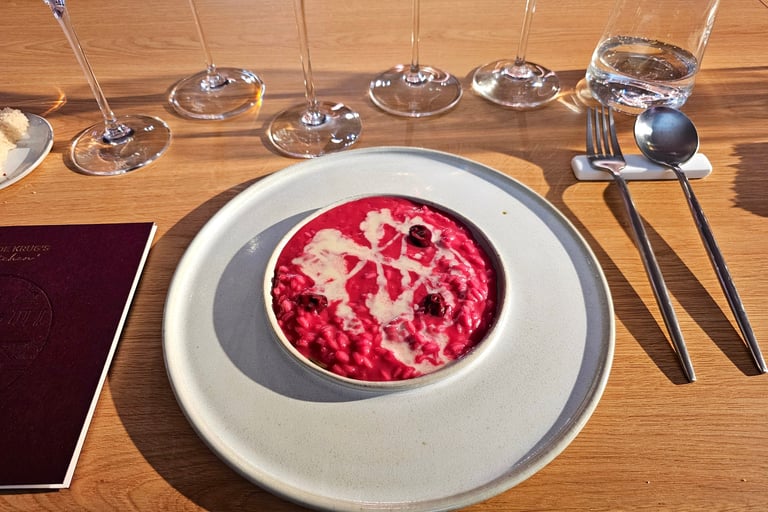Inside Krug's Kitchen - Paris, France
Join us as we travel to Paris to enjoy a Krug-paired Michelin feast! Tonight, we are going to take you inside Krug’s kitchen for a 10-course unforgettable experience. This was a very special event hosted by the champagne house, Krug, as they showcased their champagne against a backdrop of unique dishes prepared by some of the world’s greatest chefs. Enjoy!
RESTAURANTS
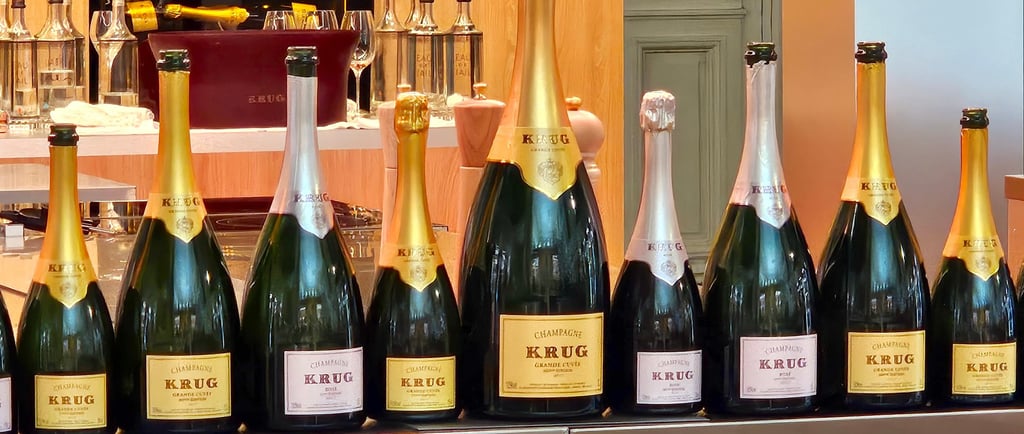

This event was something special, and definitely not your usual fine dining experience. The occasion was to commemorate 10 years of Krug x Single Ingredient, which itself is an annual celebration of a single culinary ingredient, which Krug invites their Ambassade (ambassador) Chefs to focus on to develop creative dishes. This year, however, Krug invited 10 of their Ambassade Chefs to Paris to collaborate in designing a 10-course meal. Each chef’s signature course focused on one of the specific ingredients featured throughout the last 10 years, and were as follows:
Egg - Chef Hiroyuki Kanda (Kanda - Tokyo, Japan)
Mushroom - Chef William Bradley (Addison - Del Mar, USA)
Tomato - Chef Anne Sophie Pic (Maison Pic - Valence, France)
Flower - Chef Hélène Darroze (Hélène Darroze - London, UK)
Pepper - Chef Jérôme Banctel (Le Gabriel - Paris, France)
Onion - Chef Jan Hartwig (JAN - Munich, Germany)
Rice - Chef Enrico Bartolini (Enrico Bartolini al Mudec - Milan, Italy)
Fish - Chef Guillaume Galliot (Caprice - Central, Hong Kong)
Potato - Chef Esben Holmboe Bang (Maaemo - Oslo, Norway)
Lemon - Chef Arnaud Lallement (Restaurant L'Assiette Champenoise - Tinqueux, France)
The venue for this special occasion was the Gare des Invalides, in Paris’ 7th Arrondissement. This building was once a historic railway station, originally opened in 1900, and has gone through several iterations throughout the years. Today, a portion of the station still serves as a stop for the Paris Metro, but the main building is currently undergoing a renovation. For this event, Krug transformed a portion of the building into their kitchen, with some of the spaces designed to resemble actual parts of Maison Krug, which itself is located in Reims, about an hour and a half away by car.
When we arrived, our Uber driver was initially confused as to where he was dropping us off, since the area was dark with no obvious destinations within the general vicinity. However, we were able to recognize a very nondescript Krug logo on the building nearby, which let us know that this was indeed the place. We were greeted by the host staff as we entered, and were led to an area that was designed like an open living room, where about a dozen other guests were mingling, waiting for the experience to begin. Upon entering the welcoming area, we were served glasses of Krug’s latest non-vintage, Krug Grande Cuvée 172nd edition. We had a couple minutes to chat with some of the other guests when our hostess joined us to welcome everyone to this very special experience.
This new environment was like a cross between a museum and a gastronomical laboratory, which was a stark contrast from the previous environment. Here, each of the featured ingredients was showcased in a way that was both informative and interactive. Guests were able to see, touch, and smell, in order to experience and understand what each ingredient lent to its respective dish. The overall presentation was highly creative and artistic. Finally, after spending a while here, it was time for the main event.
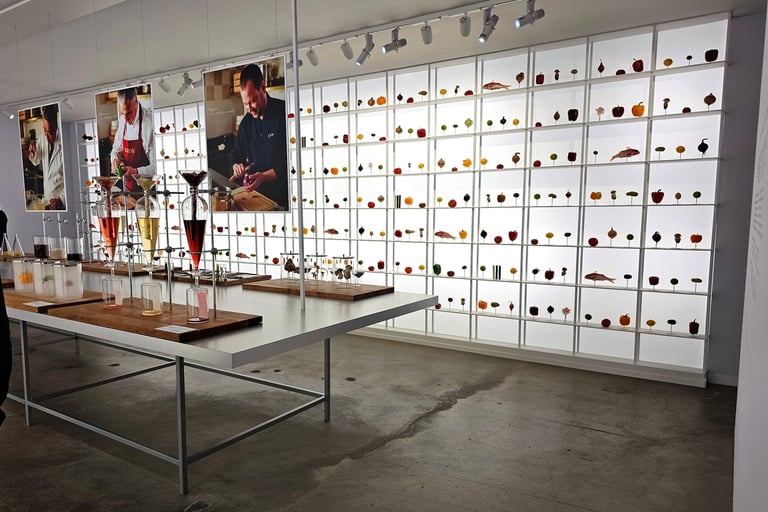

We were led into Krug’s Kitchen. It was a sizable dining room, where the tables were arranged in a large U-shape, facing into the fully-equipped kitchen, where expertly trained cooks stood ready to prepare the night’s feast. Although each dish had been designed by a different world-renowned chef, they were unfortunately not there themselves in the kitchen. That would have been a near-impossible feat though, since they each have their own respective restaurants around the world to attend to, and this event for Krug was a week-long affair. However, they had spent time training with the cooks, in order to learn specifically how to prepare each dish. Each guest’s seat was pre-assigned, to ensure that everyone fit around the table, regardless of whether they were dining as individuals, pairs, or trios. Once everyone was settled in, and glasses topped off, it was time for the meal to begin.
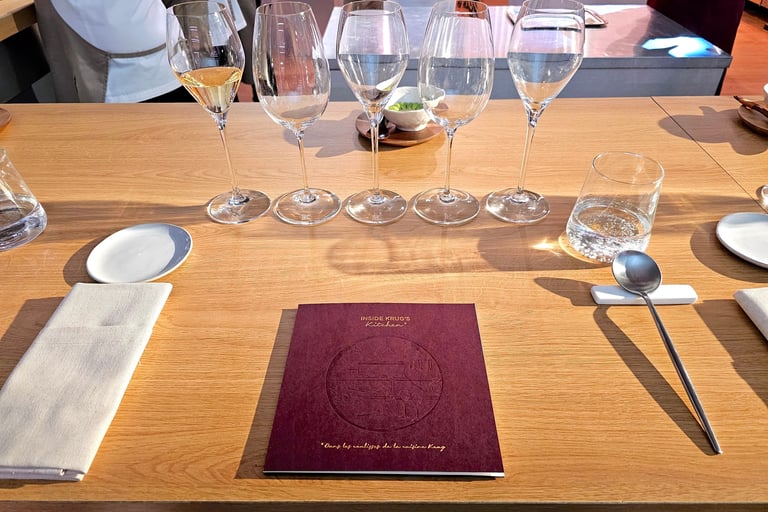

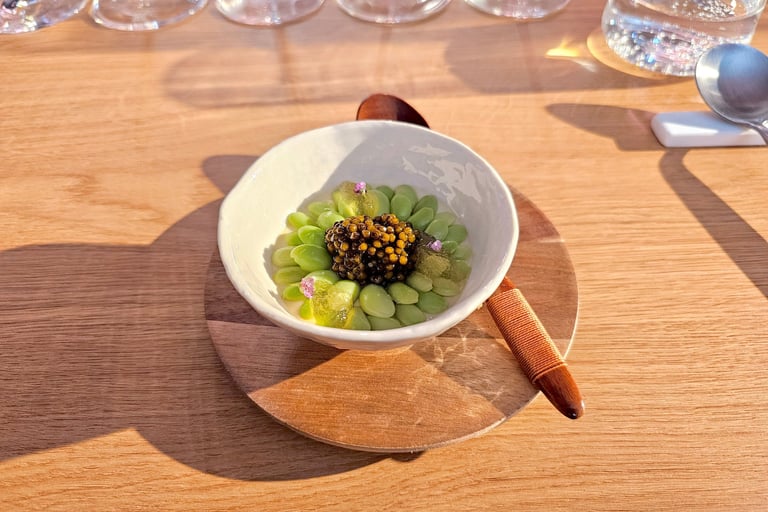

Starting the meal was chef Hiroyuki Kanda’s “egg.” This dish featured a layer of Japanese steamed egg flan beneath carefully arranged edamame, topped with caviar (naturally), all served chilled. The plating actually made the dish resemble a flower, which would have been appropriate for the flower course, which was to come later. The flavor of this dish was creamy and fresh, with the saltiness of the caviar enhancing the more subtle flavors of the egg and edamame. So far, off to a great start.
Next up was chef William Bradley’s “mushroom.” In contrast to the previous dish, this was a warm porcini mushroom dashi, with slices of mushrooms inside, along with some radishes and other vegetables to add complexity and texture. This savory, umami dish had a hearty flavor, yet at the same time was clean and light. The perfect transition to the next dish.
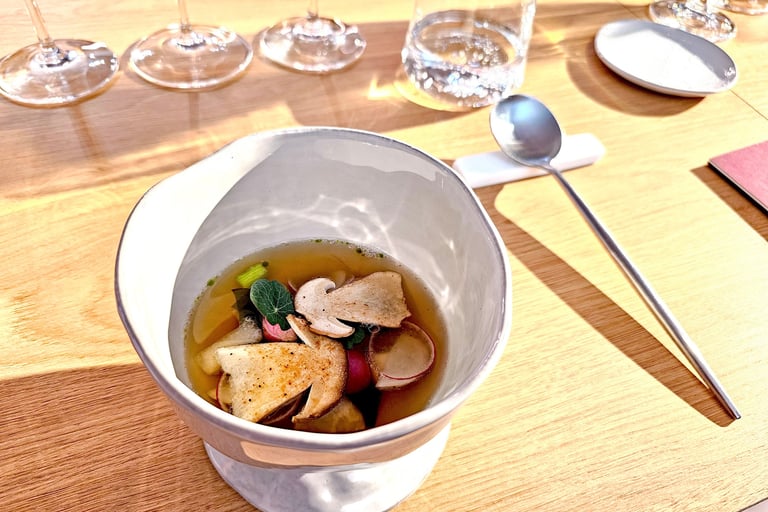

For the third course, we had “tomato” as imagined by chef Anne Sophie Pic. This dish, in my opinion, was the most creative and memorable of the evening. It started with a shell made from what I assume was the actual tomato skin, dehydrated and formed into the upper and lower half. Inside this, the cooked “meat” of the tomato was placed, along with a light vanilla, lavender, and caraway ice cream mousse. The top of the shell was placed on and topped with a faux stem, likely made from more dehydrated tomato, and then dusted with a fine, flavorful tomato powder. When plated, it looked like a plump, albeit slightly wrinkled tomato, which was actually a misleading presentation for the creativity which was inside. The contrast of flavors, textures, and temperatures in this dish was highly complex, yet worked amazingly well together. Since the event, this dish has stuck in my mind, and I would love to try it again if I ever had the opportunity.
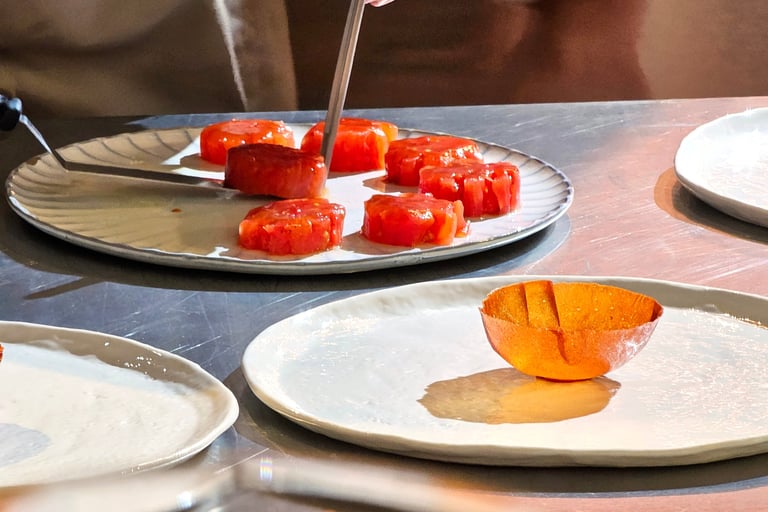

Following the tomato dish was chef Hélène Darroze’s dish, which was inspired by “flower” (of a floral variety). This dish featured spider crab, served as a Basque-inspired preparation, highlighted by flavors of pomelo and long pepper. Aside from being topped with a rose foam and rose petals, I cannot say that this dish embodied the floral essence I had hoped for. The bitterness of the pomelo made the rose essence seem less so by comparison, however, these were not my favorite flavors, and they seemed to hide the crab, rather than compliment it. To the chef’s credit, the ingredients were prepared to perfection, the only miss for me was the flavor, but that is a personal opinion.
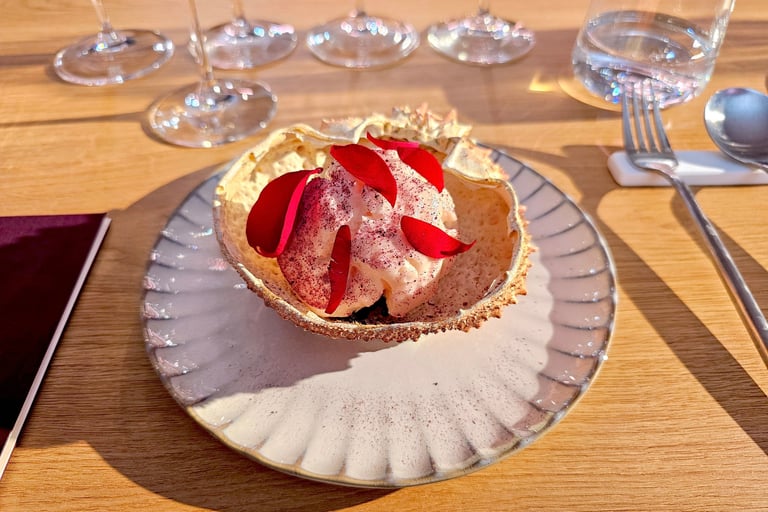

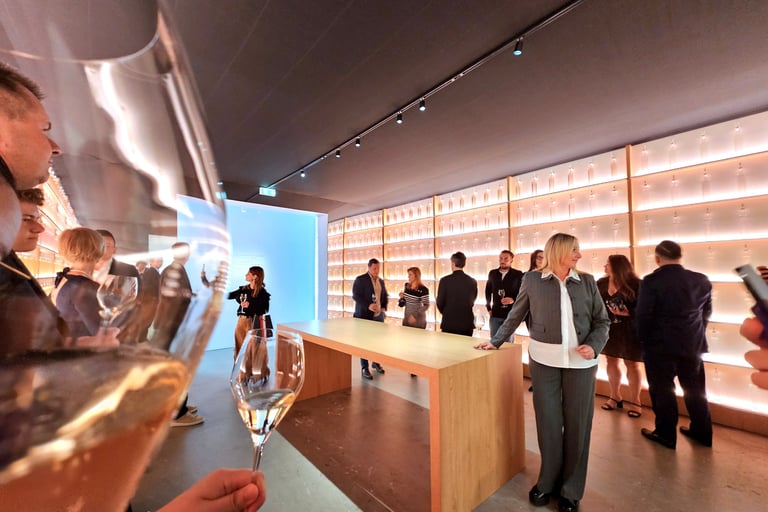

At this point, we were all led into the next room, which had been designed based on one of the special tasting rooms at Maison Krug, complete with Krug’s famous Wall of 400 Wines. In the center of the room was a large table, which at first glance, had a unique, intricate pattern across the surface. Our hostess began to discuss the champagne we were drinking, and talked about the development of their cuvée champagnes. As she was giving her explanation, she revealed that the pattern on the table was, in fact, a map of the town of Ambonnay, where Krug’s legendary Clos d’Ambonnay is located. Once she had given us an overview of Krug’s history and an education about the champagne we were all enjoying, it was time to go into the next room.
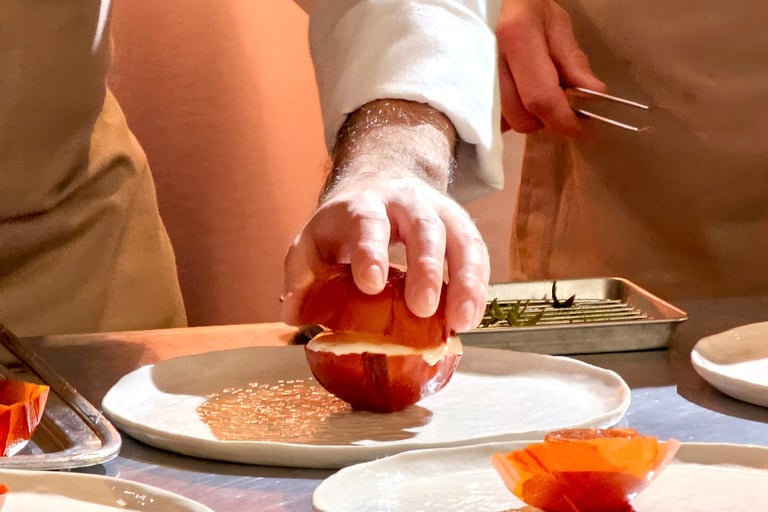

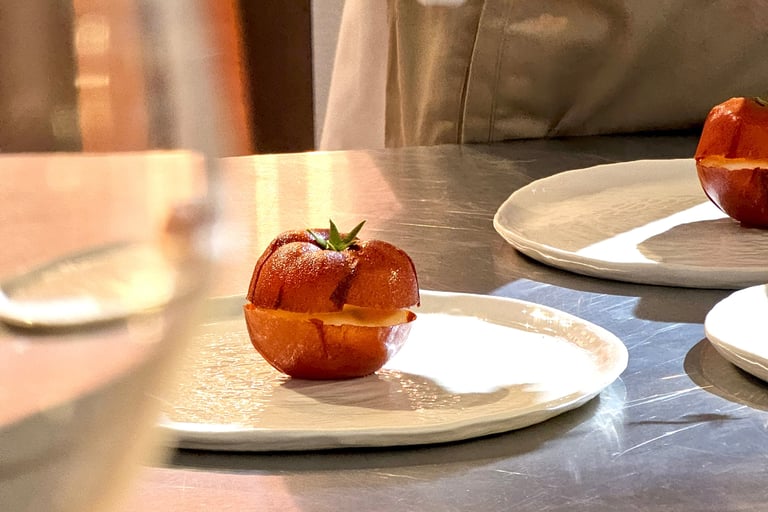

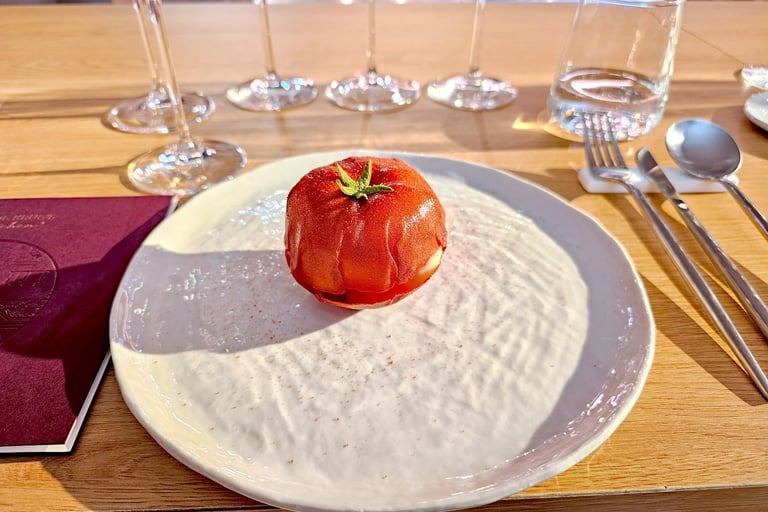

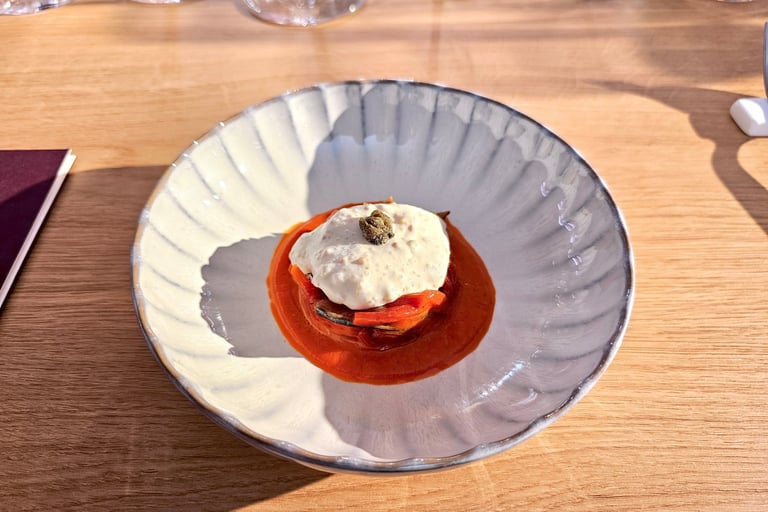

The next course was chef Jérôme Banctel’s “pepper.” For this dish, the chef chose to serve cooked red peppers, served over a red pepper puree, topped with creamy foam. The flavors here were rich and delicious, and there was balance within the dish. The color of the cooked peppers and puree was extremely vibrant as well.
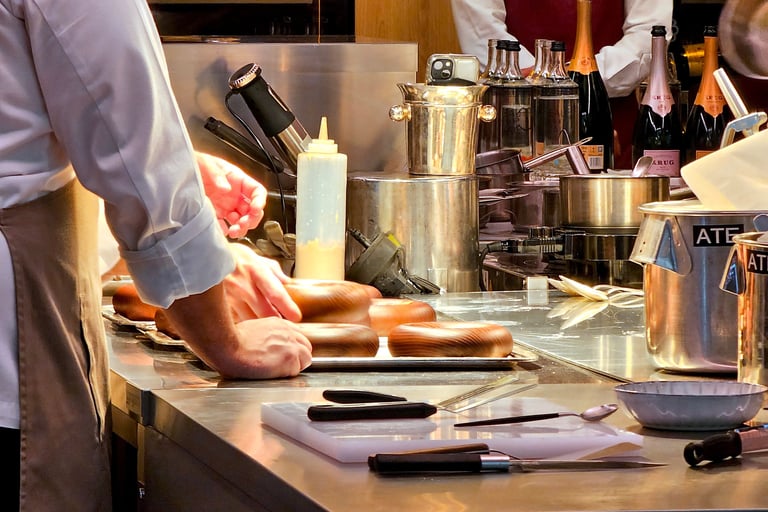

Beginning the back half of the 10-course meal, we were introduced to chef Jan Hartwig’s “onion.” What appeared reminiscent of a simple onion dip, was actually a creamy soup and was significantly more complex. A base of smoked spinach cream and quail eggs was enhanced with flavors of almond, parmesan and crispy chicken skin. Needless to say, the flavors in this dish were delicious and although the portion was perfectly appropriate, I definitely wanted more.
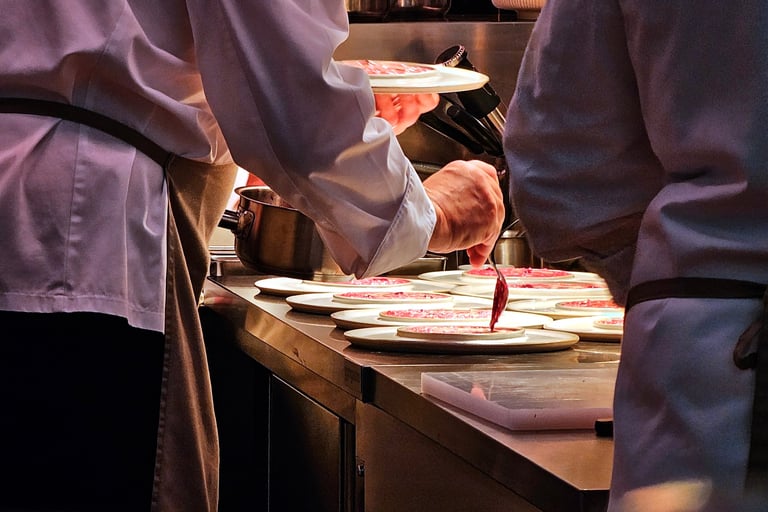

After the onion was chef Enrico Bartolini’s take on “rice.” For this dish, the rice was prepared in a risotto, which had red beets as the base and was infused with a creamy gorgonzola sauce. Although beets can be a challenging flavor for some, the way they were prepared and seasoned in this dish was perfectly tasty, not to mention complemented by the gorgonzola sauce throughout. The plating reminded me of Van Halen, and overall this was a fun, artistic take on a simple ingredient.
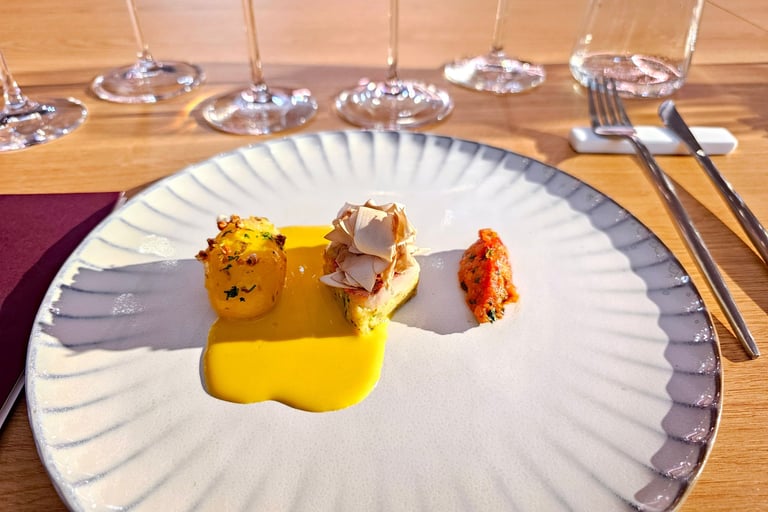

Next up was the “fish” by chef Guillaume Galliot. The featured fish was a red mullet, accompanied by amandine potato, dressed in a saffron-infused cuttlefish bolognese. The ingredients of this dish seemed an unlikely pairing, however, I really enjoyed the flavors. Also, the color that the saffron bolognese provided really stood out on the plate and made the whole thing pop. The fish was light and flaky, and made a good vessel for the sauce as well.
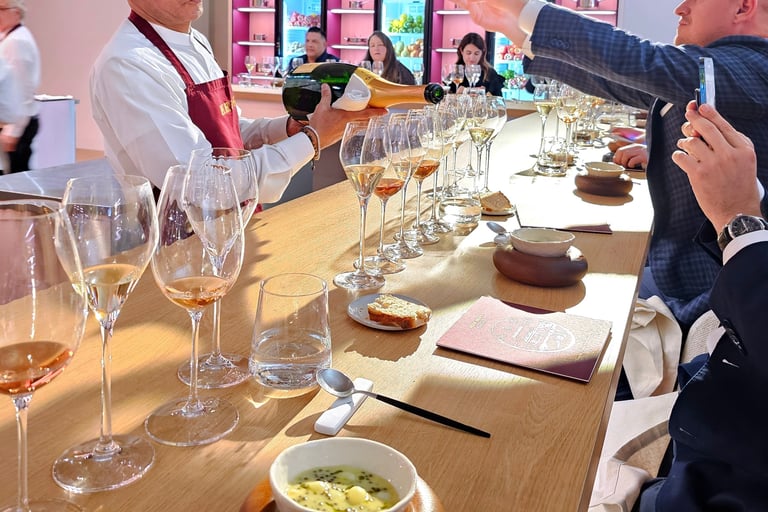

For the last savory course, we had chef Esben Holmboe Bang’s interpretation of the “potato.” Throughout the meal, the dishes had been paired with different pours of champagne, from recent Grande Cuvées to large-format rosés. This dish was paired with the oldest edition of champagne served that night, Krug Grande Cuvée 162nd edition, which is primarily based around the harvest of 2006. More on that in a moment. The dish itself was a potato soup with pieces of potato and king crab, infused generously with caviar, accented by hints of elderflower and blackcurrant. Rich, creamy, umami, delicious. How can you go wrong with ingredients like these? I could have had several bowls of this, but again, the portion was appropriate for a 10-course meal. My only critique of this dish is that it was too safe. Compared with some of the other daring creations throughout the night’s meal, this one was definitely not going to raise any eyebrows. While that is certainly good in a sense, I have respect for dishes which try to push traditional boundaries or attempt to create new flavor combinations. Although this was one of my favorite dishes from a flavor perspective, I feel like a riskier preparation could have been rewarded here.
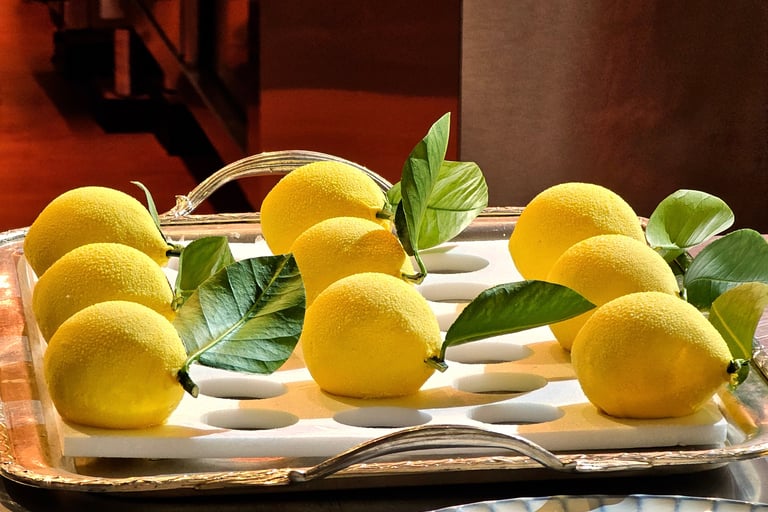

Rounding out the night, the final dish was “lemon” by Krug’s hometown hero, chef Arnaud Lallement. Hailing from Restaurant L’Assiette Champenoise just outside Reims, chef Arnaud is the mastermind behind the menu at Maison Krug. He was also Krug’s first Ambassade chef, so needless to say, he and the Krug family go way back. For his dish, what we found on our plate was nothing more than what looked like a lemon. However, it was the chef’s delicious dessert of a sweet, tangy, and ever so slightly bitter lemon cream, surrounded by a white chocolate shell which had been precisely molded to mimic the appearance of an actual lemon. The dish seemed so simple at a glance, but considering the thoughtful and accurately crafted presentation, combined with the perfectly balanced sweet lemon flavor of the cream, it must have taken some effort to develop and perfect. A highly enjoyable dessert to end a spectacular meal.
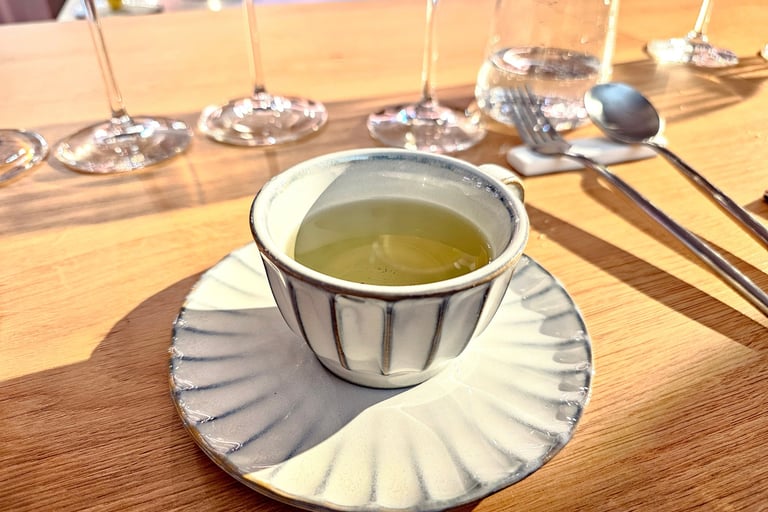

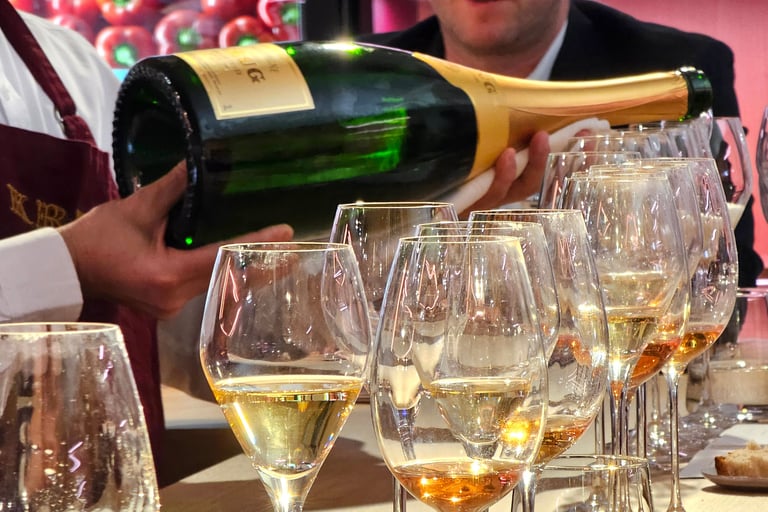

Through the dinner, every two courses were paired with a select champagne. The egg and the mushroom were paired with Grande Cuvée, 171st edition. Next, the 28th edition of Krug’s rosé was the pairing for the tomato as well as the flower. The pepper and onion were paired with the 169th edition of the Grande Cuvée from a magnum. The following pairing for the rice and the fish was also out of a magnum, but this time it was the 21st edition of the rosé. Finally, to go with the potatoes (as well as the lemon dessert) was the fantastic Krug Grande Cuvée 162nd edition. This was the largest format they served, which was from a Jeroboam. Each of these champagnes had the signature toasty, bready characteristics, synonymous with Krug, however, each was unique in its own profile and subtleties. Overall, the dishes and the different champagnes complemented one another, but the truth is for me, Krug will never not pair well with a dish, which is one of the reasons this event was a must.
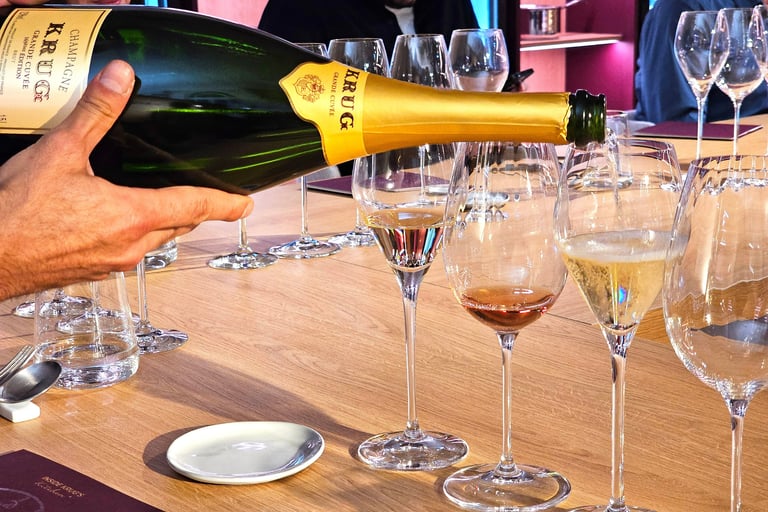

As a whole, the Inside Krug’s Kitchen experience was a tremendous success. The venue was meticulously designed and constructed and did a fantastic job of transporting us from the heart of Paris to the heart of Maison Krug. Throughout the event, the service and hospitality were amazing as well. Something that I did not mention before was the genuine, organic rapport which the hosts and guests developed as the courses rolled out and the champagne began to flow. All of the guests had struck up conversations with the hosts, as well as with one another throughout the evening. This was very meaningful, because like the dishes before us, the guests dining at this event came from all over the world, but shared a common appreciation for Krug. By the end of the meal, we had all become one big blend of enjoyment, much like a Grande Cuvée.
